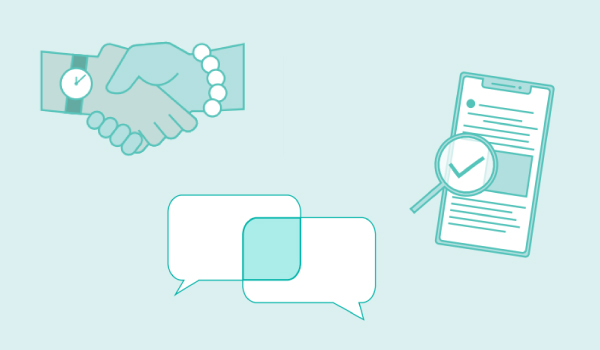
Helping students lead productive conversations this holiday season and beyond
For those celebrating holidays this season, it can be a joyful time to get together with loved ones. However, navigating conversations with family and friends — especially any who have been misled by mis- and disinformation — can also be stressful.
Educators can help students develop the skills to confidently manage these situations, and understand and debunk misinformation they may encounter, using resources from the News Literacy Project in their lesson plans. Below is a curated selection of lessons, exercises and articles that can be useful to integrate into a middle or high school news and media literacy curriculum.
Start with our article and infographic “How to teach news literacy in polarizing times” for strategies on how to approach issues such as partisanship and credibility.

Assign
Educators can help students analyze the information landscape by assigning lessons through our Checkology®virtual classroom. These suggestions — just three of the platform’s 18 lessons for grades 6-12 — help students understand misinformation, spot conspiracy theories and discover the primary purpose of individual pieces of information.
Assign these and other media and news literacy lessons in just a few clicks. (It’s free!)
Supplementary Exercises
By assigning supplementary Checkology exercises, challenges and missions, educators can help improve students’ recognition of misinformation and strong evidence. (A free Checkology account is required to assign these exercises; register now.)

Read
These articles provide some basic skills for recognizing misinformation and confronting it — plus, they include helpful infographics for visual learners.
Discuss
Check out our collection of topics on Flip, packed with relevant classroom activities and discussion-starters. The topics below cover how to conduct conversations with empathy and respect, how to share information responsibly online and more. (Note: To add topics to a group, be sure to create a Flip account.)
- Flip topic: How to (respectfully) speak up
- Flip topic: Take care when you share
- Flip topic: Don’t just react. Reflect!
By teaching classes how to apply critical thinking and news literacy skills in their lives, you’ll equip students with the ability to identify fact from fiction — an invaluable gift during the holiday season and beyond. A great starting point (especially if you are looking to fill shorter, end-of-semester days) is Checkology; get started today!